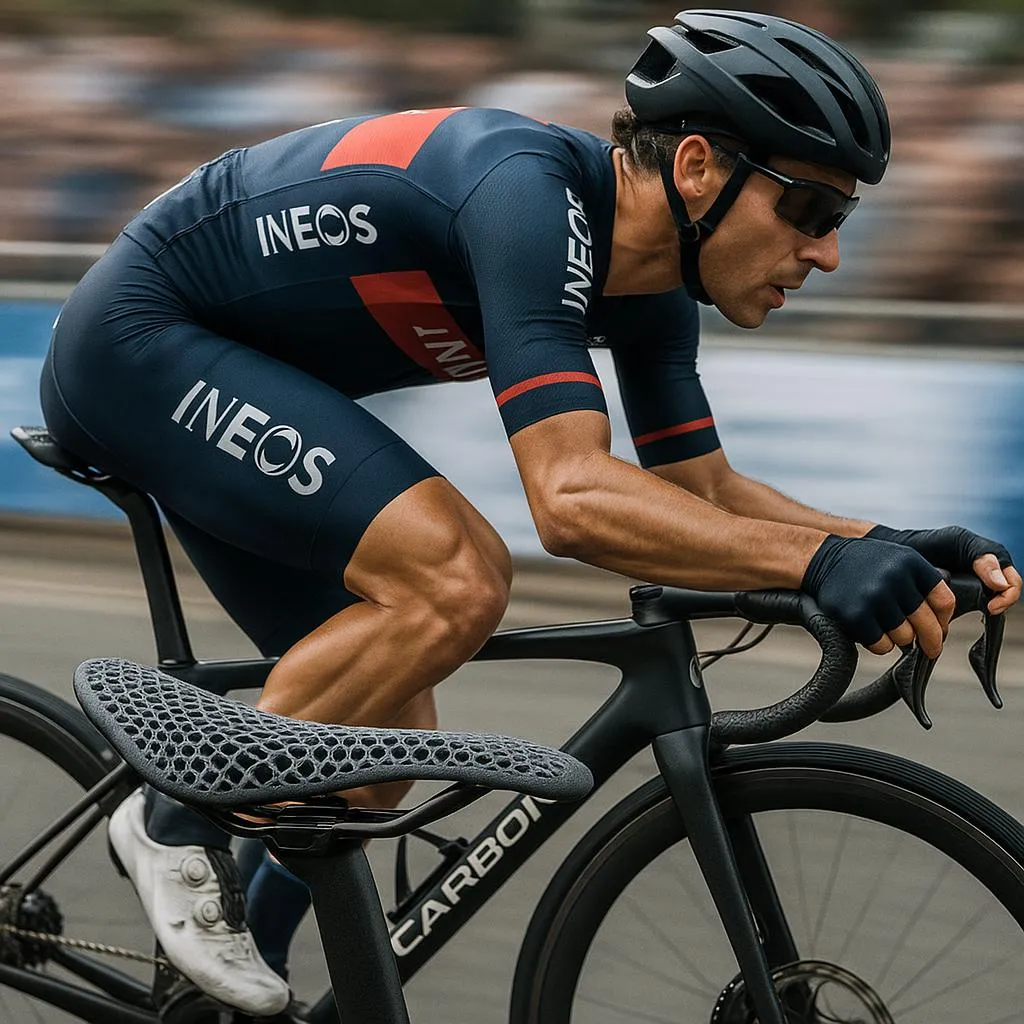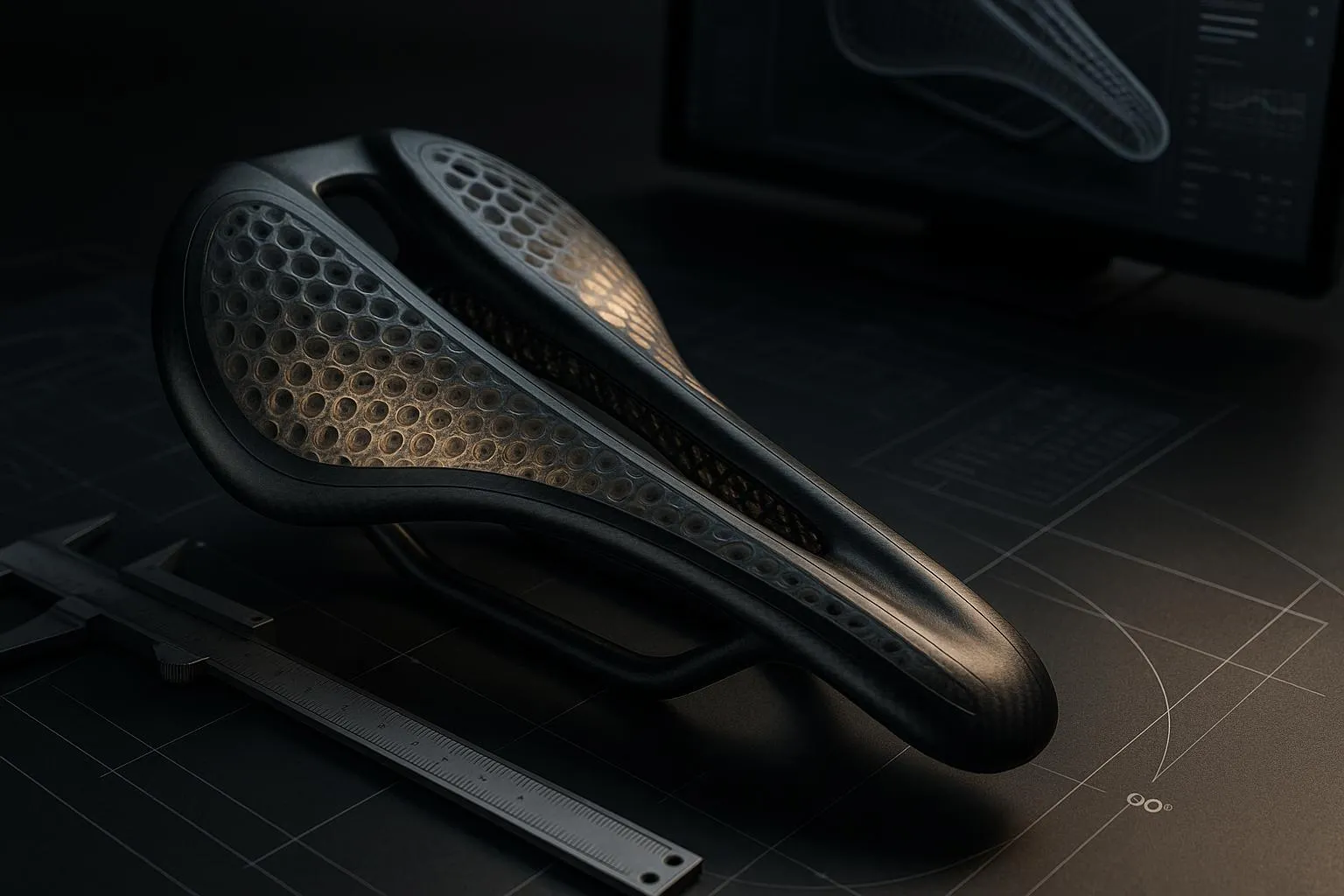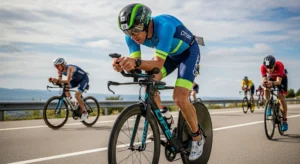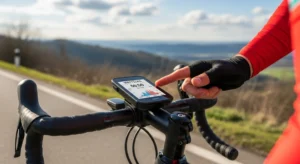The cycling world witnessed a technological milestone in 2025 when Tadej Pogačar crossed the finish line in Paris to claim his Tour de France victory, supported by a revolutionary $400 3D printed saddle that represents the cutting edge of cycling comfort and performance technology. This achievement marked not just a personal triumph for the Slovenian cyclist, but a defining moment for additive manufacturing in professional sports, demonstrating how 3D printing technology is transforming the most fundamental aspects of cycling equipment.
The adoption of 3D printed saddles in professional cycling has accelerated dramatically in 2025, with seven out of ten Tour de France finishers using these advanced comfort systems. This widespread professional adoption signals a fundamental shift in how cyclists and equipment manufacturers approach the critical interface between rider and bike, moving from one-size-fits-all solutions to precisely customized comfort and performance systems.
The technology behind 3D printed saddles represents a convergence of advanced materials science, digital manufacturing, and biomechanical understanding that was unimaginable just a few years ago. As this technology continues to evolve and become more accessible, it promises to transform not only professional cycling but the entire cycling industry’s approach to rider comfort, performance optimization, and equipment customization.

The Technology Behind 3D Printed Saddle Innovation
The foundation of 3D printed saddle technology lies in Digital Light Synthesis (DLS), an advanced additive manufacturing process that enables the creation of complex lattice structures with unprecedented precision and customization capabilities. This technology allows manufacturers to create saddle designs that would be impossible to produce using traditional manufacturing methods, opening new possibilities for comfort and performance optimization.
The DLS process used in saddle manufacturing involves the precise curing of liquid resin using digital light projection, creating solid structures layer by layer with remarkable accuracy and detail. This process enables the creation of variable-density lattice structures within a single saddle, allowing different zones to provide varying levels of support, flexibility, and cushioning based on the specific needs of individual riders.
Carbon Adaptive’s One-to-One Program represents the current state-of-the-art in personalized saddle manufacturing, using advanced scanning and analysis techniques to create saddles that are precisely tailored to each rider’s anatomy and riding style. This program combines biomechanical analysis, pressure mapping, and digital modeling to create saddle designs that optimize comfort and performance for individual riders [1].
The lattice structures created through 3D printing technology offer several key advantages over traditional saddle construction methods. These structures can provide targeted support and cushioning exactly where needed while maintaining overall lightness and structural integrity. The ability to vary density and flexibility within different zones of the saddle enables optimization for specific pressure points and riding positions.
The materials used in 3D printed saddle construction have evolved significantly to meet the demanding requirements of professional cycling applications. Modern 3D printing materials offer excellent durability, weather resistance, and performance characteristics while maintaining the flexibility and comfort properties necessary for long-distance riding. The integration of these materials with traditional carbon fiber frames creates saddles that are both lightweight and incredibly strong.
The precision achievable through 3D printing technology enables customization at a level that was previously impossible with mass production techniques. Every aspect of the saddle’s geometry, from overall shape to internal structure, can be optimized for individual riders, creating truly personalized equipment that maximizes both comfort and performance.
Professional Adoption and Performance Benefits
The rapid adoption of 3D printed saddles in professional cycling reflects the significant performance advantages these systems provide at the highest levels of competition. The Tour de France 2025 results, where seven out of ten finishers used 3D printed saddles, demonstrate the competitive advantages that this technology can provide in the most demanding cycling environments.
Professional cyclists face unique challenges that make saddle comfort and performance particularly critical. The combination of extreme physical demands, long hours in the saddle, and the need for marginal gains in performance creates an environment where advanced saddle technology can provide meaningful competitive advantages. The ability to customize saddles precisely for individual riders addresses these challenges in ways that traditional saddle designs cannot match.
The Fizik Vento Argo 00 Adaptive saddle used by Pogačar represents the current pinnacle of 3D printed saddle technology, incorporating advanced materials, precise customization, and optimized design to provide maximum performance benefits. The saddle’s ability to provide micro-tuned zones of stiffness and support enables better pressure distribution and reduced numbness during long stages, directly impacting rider performance and endurance [1].
The performance benefits of 3D printed saddles extend beyond simple comfort improvements to include measurable advantages in power transfer, aerodynamics, and rider positioning. The ability to optimize saddle shape and support characteristics for individual riders enables more efficient pedaling mechanics and better overall bike fit, translating to improved performance on the road.
Professional team adoption of 3D printed saddle technology has accelerated as teams recognize the competitive advantages these systems provide. The UAE Team Emirates’ success with 3D printed saddles has influenced other professional teams to explore similar technologies, creating a competitive environment that drives continued innovation and development.
The data collection and analysis capabilities enabled by 3D printed saddle technology provide professional teams with valuable insights into rider performance and comfort. The ability to monitor pressure distribution, movement patterns, and other biomechanical factors enables continuous optimization of rider position and equipment setup.
Customization and Biomechanical Optimization
The customization capabilities of 3D printed saddle technology represent a fundamental advancement in how cycling equipment can be tailored to individual riders. Unlike traditional saddles that offer limited adjustment options, 3D printed saddles can be designed from the ground up to match the specific anatomical and biomechanical characteristics of individual riders.
The biomechanical analysis process that informs 3D printed saddle design involves comprehensive assessment of rider anatomy, flexibility, riding position, and movement patterns. This analysis creates a detailed understanding of how each rider interacts with their bike, enabling the creation of saddles that optimize these interactions for maximum comfort and performance.
Pressure mapping technology plays a crucial role in 3D printed saddle customization, providing detailed information about how weight and pressure are distributed across the saddle surface during riding. This data enables the creation of saddle designs that redistribute pressure more evenly, reducing hot spots and improving overall comfort during long rides.
The ability to create variable-density structures within 3D printed saddles enables unprecedented levels of customization in support and cushioning characteristics. Different zones of the saddle can be optimized for different functions, with firmer areas providing support for power transfer and softer areas providing cushioning for sensitive pressure points.
Riding style analysis contributes important information to the saddle customization process, with factors such as riding position, pedaling style, and typical ride duration all influencing the optimal saddle design. This analysis ensures that the saddle not only fits the rider’s anatomy but also supports their specific riding style and performance goals.
The integration of 3D printed saddle technology with [cycling performance and health optimization](https://www.ibikeblog.net/ibike-blogs/) approaches enables a holistic approach to rider comfort and performance. The ability to optimize saddle design based on comprehensive biomechanical analysis supports broader performance optimization strategies and injury prevention efforts.
Manufacturing Process and Quality Control
The manufacturing process for 3D printed saddles involves sophisticated quality control and precision manufacturing techniques that ensure consistent performance and reliability. The complexity of these manufacturing processes reflects the advanced nature of the technology and the demanding requirements of professional cycling applications.
The Digital Light Synthesis process used in saddle manufacturing requires precise control of multiple variables including resin chemistry, light exposure patterns, layer thickness, and curing parameters. Each of these variables must be carefully controlled to ensure that the final product meets the exacting standards required for professional cycling applications.
Quality control processes for 3D printed saddles involve multiple stages of testing and validation to ensure that each saddle meets performance, safety, and durability requirements. These processes include structural testing, fatigue testing, and real-world performance validation to ensure that the saddles can withstand the demanding conditions of professional cycling.
The integration of traditional manufacturing techniques with 3D printing technology creates hybrid manufacturing processes that combine the best aspects of both approaches. The carbon fiber frame components of 3D printed saddles are typically manufactured using traditional composite techniques, while the lattice structures are created using additive manufacturing processes.
Material consistency and quality control represent critical aspects of 3D printed saddle manufacturing, with strict standards for resin quality, curing consistency, and structural integrity. The materials used in these applications must meet demanding requirements for strength, durability, and performance while maintaining the flexibility and comfort characteristics necessary for cycling applications.
Post-processing and finishing operations play important roles in the final quality and performance of 3D printed saddles. These operations may include surface finishing, assembly with traditional components, and final quality inspection to ensure that each saddle meets the required specifications.
Cost-Benefit Analysis and Market Accessibility
The current pricing structure for 3D printed saddles reflects both the advanced technology involved and the limited production volumes that characterize this emerging market segment. Understanding the cost-benefit relationship helps evaluate the value proposition of this technology for different types of cyclists and applications.
Professional-grade 3D printed saddles currently command premium pricing, with systems like the Fizik Vento Argo 00 Adaptive retailing for around $400. This pricing reflects the advanced technology, customization capabilities, and limited production volumes that characterize the current market. However, the performance and comfort benefits may justify this premium for serious cyclists and professionals.
The cost comparison with traditional high-end saddles reveals that 3D printed options, while expensive, are not dramatically more costly than other premium cycling components. When considered in the context of overall bike value and the potential performance benefits, the cost premium may be reasonable for riders who prioritize comfort and performance optimization.
The value proposition of 3D printed saddles extends beyond simple cost considerations to include factors such as customization, performance benefits, and potential health advantages. For riders who struggle with saddle comfort or who require precise fit optimization, the benefits of 3D printed technology may justify the additional cost.
Market accessibility is expected to improve as 3D printing technology matures and production volumes increase. The economies of scale that develop as the market grows should help reduce costs and make this technology accessible to a broader range of cyclists. The integration with [advanced cycling technology](https://www.ibikeblog.net/ibike-blogs/) trends suggests continued development and cost reduction over time.
The total cost of ownership considerations for 3D printed saddles may be favorable compared to traditional options when factors such as durability, performance benefits, and reduced need for saddle replacement are considered. The precise fit and optimized design of 3D printed saddles may result in longer service life and better overall value.
Comparison with Traditional Saddle Technologies
The performance and comfort characteristics of 3D printed saddles differ significantly from traditional saddle technologies, representing a fundamental advancement in how cycling comfort and support are achieved. Understanding these differences helps illustrate the advantages and potential limitations of 3D printed saddle technology.
Traditional saddle construction typically relies on foam padding and uniform support characteristics across the saddle surface. While this approach can provide adequate comfort for many riders, it lacks the ability to optimize support and cushioning for individual anatomy and riding style. The one-size-fits-all nature of traditional saddles means that many riders must compromise on comfort or performance.
The variable-density lattice structures possible with 3D printing technology enable targeted support and cushioning that traditional construction methods cannot achieve. This capability allows 3D printed saddles to provide firm support where needed for power transfer while offering cushioning in areas where pressure relief is important for comfort.
Weight comparisons between 3D printed and traditional saddles reveal that advanced manufacturing techniques can achieve weight parity or even advantages compared to traditional high-end saddles. The ability to optimize material placement and eliminate unnecessary material through 3D printing can result in lighter saddles without compromising strength or performance.
Durability characteristics of 3D printed saddles have proven to be excellent in professional cycling applications, with the advanced materials and construction techniques providing resistance to wear, weather, and the demanding conditions of competitive cycling. The structural integrity of the lattice designs has proven capable of withstanding the extreme forces encountered in professional racing.
The adjustment and customization options available with 3D printed saddles far exceed those of traditional saddles. While traditional saddles may offer limited adjustment through rail position or tilt, 3D printed saddles can be customized in their fundamental design to match individual rider requirements.
Integration with Modern Bike Fitting and Analysis
The integration of 3D printed saddle technology with modern bike fitting and biomechanical analysis represents a significant advancement in how cyclists can optimize their equipment for comfort and performance. This integration enables a level of precision and customization that was previously impossible with traditional fitting approaches.
Modern bike fitting techniques increasingly rely on advanced measurement and analysis technologies that can provide the detailed information necessary for 3D printed saddle customization.




